written by Tjerk Dijkstra
Lately I’ve been seeing too many concepts that question our human flaws in a questionable way. With services that rely on guilt, scarcity, laziness and other human imperfections. A taxi service that gets more expensive when your phone’s battery is low, hotel room prices that skyrocket when you visit the website more often, insurance that sets premiums based on potentially discriminatory algorithms that no one really understands, a service that someone bike to your house for less than minimum wage for a forgotten carton of milk. Was that consciously designed, or did it arise unconsciously? When I see these examples, I think: “As (future) designers, we can do this better, right?”
Tjerk Dijkstra demands immediate improvement of everything.¹
People-oriented design. It sounds so obvious. Of course you make something for a human being. But what exactly does that mean? When you look at people in the cognitive field, you can conclude that we as humanity have our pitfalls. We are impulsive, impressionable, predictable, lazy, heavy thinking takes effort and we are programmed to avoid that thinking as much as possible. So the question is: how are you going to design for that?
Design well, start talking to people.
At CMD LWD, designing for people is central. I myself describe design as an iterative process in which you look for what works. A balance between zooming in and out and framing and then stepping back and reflecting on what you are designing. In practice, this means making something quickly. Putting something into the world and going on your face regularly because you find out that you are not making the impact you wanted to make. And really, but also really understand who you are making something for. Because we, students and also teachers, make a lot at CMD. Websites, campaigns, brands, music, movies, games and so much more. When you design these interventions, you see how quickly you can make an impact in the everyday life of every person. Did we come up with this ourselves? No. We stand on the shoulders of the designers before us. This philosophy is also known as human-centered design – human-centered design. That’s what it’s all about for us.
In addition to our flaws, we as humanity are also creative, resourceful, funny, crazy, social and – especially at CMD – real nerds.
As a new generation of designers, it is therefore up to us to consciously think about the impact and value of the everyday things that we are allowed to design for people.
Good examples of this are people who dare to design with clear restrictions. Because where there are restrictions, our ingenuity and perseverance flourish. There are entrepreneurs like Stefan Wobben who say: “I want to make a shoe that is 100% vegan, fair, biodegradable and plastic-free.” then it is perseverance, perseverance and, above all, making prototypes that prove that it is possible.
Other examples such as a packaging-free supermarket or a car that really only runs on the power of the sun.
CMD LWD alumnus Douwe Schilstra also shows how people-oriented design works in practice. His graduation work focuses on low-literate people. Without talking to this target group, he would probably never have come up with a working prototype. → Read Douwe’s story here
Because people-oriented design also means daring to present a product with a strong opinion. Finding that voice or opinion is an important part of our training, you must always dare to ask the question, why does someone, target group or client, do what they do? And is that good, or could it be better? Everything you can think of can now be designed, but does that have to be the case?
There are too many things in this world that have been given too little or no thought. Or, on the contrary, it has been well thought out to hide the adverse effects so that money can be earned. That is why we ask our students the question: do you want to participate in this as a designer?
The professional field throws a target group into the design process too quickly.
A target group provides direction and focus. Unfortunately, in practice we often see that a target group is reduced to a persona. A set of demographics, full of assumptions. Little more than a mediocre excuse for not really listening to what human behavior is, where you offer value. When you are inventing a person to validate the concept, an alarm bell should really ring. Please go talk to real people and design for us, with all our flaws.

